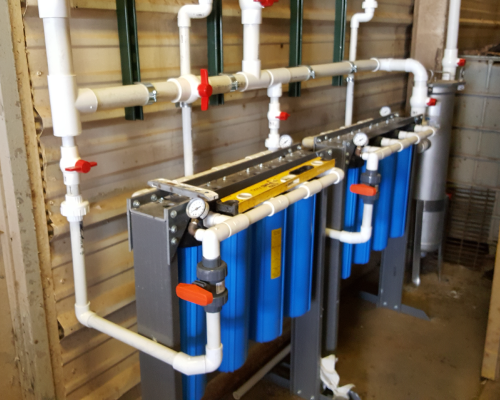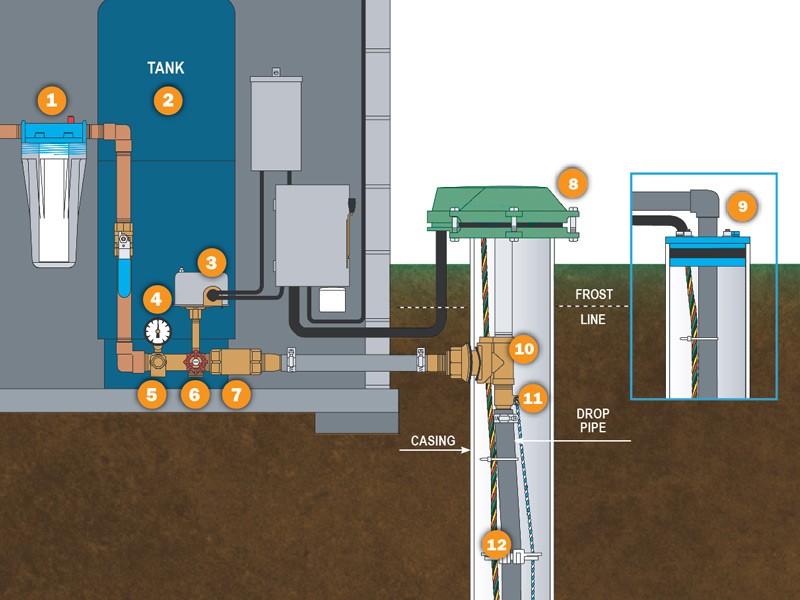Anatomy of Your Home's Plumbing System: Why It Matters
Anatomy of Your Home's Plumbing System: Why It Matters
Blog Article
What're your thoughts about Plumbing Installation 101: All You Need to Know?

Understanding just how your home's plumbing system functions is vital for every property owner. From providing tidy water for alcohol consumption, food preparation, and bathing to safely removing wastewater, a properly maintained pipes system is important for your family members's health and comfort. In this comprehensive overview, we'll explore the elaborate network that composes your home's plumbing and deal tips on upkeep, upgrades, and dealing with usual issues.
Intro
Your home's pipes system is more than just a network of pipelines; it's an intricate system that ensures you have accessibility to tidy water and efficient wastewater elimination. Understanding its parts and just how they collaborate can help you protect against expensive repair work and make sure everything runs efficiently.
Basic Parts of a Pipes System
Pipelines and Tubing
At the heart of your pipes system are the pipes and tubes that carry water throughout your home. These can be made from numerous products such as copper, PVC, or PEX, each with its benefits in regards to resilience and cost-effectiveness.
Components: Sinks, Toilets, Showers, etc.
Fixtures like sinks, bathrooms, showers, and bath tubs are where water is utilized in your house. Recognizing just how these components connect to the plumbing system helps in identifying issues and intending upgrades.
Valves and Shut-off Factors
Valves control the flow of water in your pipes system. Shut-off shutoffs are vital during emergencies or when you need to make fixings, enabling you to separate parts of the system without interfering with water circulation to the entire home.
Water Supply System
Key Water Line
The main water line connects your home to the local supply of water or a personal well. It's where water enters your home and is distributed to different components.
Water Meter and Stress Regulator
The water meter steps your water usage, while a pressure regulatory authority ensures that water flows at a safe pressure throughout your home's plumbing system, avoiding damage to pipelines and components.
Cold Water vs. Hot Water Lines
Understanding the difference between cold water lines, which provide water directly from the major, and warm water lines, which lug heated water from the hot water heater, helps in troubleshooting and preparing for upgrades.
Drainage System
Drain Pipeline and Traps
Drain pipelines lug wastewater far from sinks, showers, and bathrooms to the sewer or septic system. Catches prevent sewer gases from entering your home and also trap debris that could trigger clogs.
Ventilation Pipes
Ventilation pipes allow air right into the drainage system, avoiding suction that might slow drainage and trigger traps to empty. Correct ventilation is necessary for preserving the stability of your plumbing system.
Value of Proper Drain
Making certain appropriate drainage avoids backups and water damages. On a regular basis cleaning up drains pipes and keeping catches can avoid pricey fixings and prolong the life of your pipes system.
Water Furnace
Kinds Of Water Heaters
Hot water heater can be tankless or conventional tank-style. Tankless heaters warm water as needed, while tanks keep heated water for prompt use.
Just How Water Heaters Link to the Pipes System
Understanding exactly how hot water heater connect to both the cold water supply and warm water distribution lines helps in detecting concerns like inadequate hot water or leakages.
Maintenance Tips for Water Heaters
Consistently flushing your hot water heater to eliminate sediment, inspecting the temperature setups, and examining for leaks can expand its lifespan and improve energy performance.
Usual Pipes Issues
Leakages and Their Causes
Leaks can occur because of aging pipelines, loose installations, or high water stress. Dealing with leakages immediately stops water damage and mold growth.
Obstructions and Blockages
Blockages in drains pipes and toilets are typically brought on by purging non-flushable items or an accumulation of oil and hair. Utilizing drainpipe displays and being mindful of what goes down your drains pipes can protect against clogs.
Indications of Pipes Issues to Look For
Low water stress, slow-moving drains, foul odors, or abnormally high water bills are indicators of potential pipes problems that must be addressed quickly.
Plumbing Upkeep Tips
Normal Inspections and Checks
Set up annual plumbing evaluations to catch concerns early. Look for indicators of leaks, deterioration, or mineral build-up in taps and showerheads.
Do It Yourself Maintenance Tasks
Basic jobs like cleansing tap aerators, looking for commode leakages utilizing dye tablets, or protecting exposed pipes in cool environments can protect against significant plumbing problems.
When to Call an Expert Plumbing Professional
Know when a plumbing problem needs expert knowledge. Attempting complex repair services without correct knowledge can lead to even more damages and higher repair costs.
Upgrading Your Pipes System
Reasons for Updating
Updating to water-efficient components or replacing old pipes can boost water top quality, lower water costs, and boost the value of your home.
Modern Pipes Technologies and Their Benefits
Explore modern technologies like wise leak detectors, water-saving commodes, and energy-efficient hot water heater that can save cash and minimize environmental influence.
Cost Considerations and ROI
Compute the in advance expenses versus lasting financial savings when considering plumbing upgrades. Several upgrades pay for themselves via decreased energy bills and less fixings.
Ecological Effect and Conservation
Water-Saving Fixtures and Devices
Installing low-flow faucets, showerheads, and bathrooms can dramatically reduce water usage without compromising efficiency.
Tips for Decreasing Water Usage
Basic practices like taking care of leakages without delay, taking much shorter showers, and running complete tons of washing and meals can preserve water and lower your utility expenses.
Eco-Friendly Plumbing Options
Think about lasting pipes materials like bamboo for flooring, which is durable and environment-friendly, or recycled glass for kitchen counters.
Emergency Readiness
Actions to Take During a Plumbing Emergency
Know where your shut-off valves are located and exactly how to shut off the water system in case of a ruptured pipeline or major leakage.
Significance of Having Emergency Situation Calls Convenient
Maintain call information for neighborhood plumbings or emergency situation solutions conveniently offered for quick action throughout a plumbing dilemma.
Do It Yourself Emergency Situation Fixes (When Suitable).
Short-lived fixes like using duct tape to spot a dripping pipeline or positioning a pail under a dripping faucet can lessen damage till a specialist plumbing technician shows up.
Final thought.
Recognizing the composition of your home's plumbing system empowers you to maintain it effectively, saving time and money on repairs. By following normal upkeep regimens and staying informed concerning contemporary plumbing technologies, you can guarantee your plumbing system runs efficiently for years to come.
HOW YOUR PLUMBING SYSTEM WORKS
Which Pipes Do What?
Blue lines = fresh water supply entering the building
Red lines = hot water supply entering the building
Grey lines = pipes carrying waste away from the building and venting pipes carrying gases away from the building (through the roof)
YOUR MAIN PLUMBING SYSTEMS
There are two main plumbing systems that support your home s basic plumbing needs one that brings clean water into your home, and one that sends dirty water away from your home. Connected to the toilet, bath, shower, and other faucets in your home, these two systems keep your water flowing in the right directions.
ACCESSING FRESH WATER
Fresh and clean water is brought into your home through the main water supply line . Filtered through one pipe, this water is pressured to flow into the various fixtures in your home at any given time.
This water can be sourced from a well located on your property, a pond or river (mostly cottages), or, as in most cases, from the city s municipal water treatment centre. However, it is important to note that water that is untreated, such as the water siphoned from ponds or rivers, may not be safe to drink. Personal water supplies always need to be treated for hardness and contaminants before consumed.
MUNICIPAL WATER SUPPLIES
Improve taste and odour
Remove sediment
Eliminate hardness
Reduce chlorine
COLD WATER SUPPLY VS. HOT WATER SUPPLY
Cold water flows into your home or building through the service line, which then distributes hot or cold water to your fixtures. This line is most commonly run through a central column that runs floor to floor. Hot water runs in short and straight pipes as the longer the pipeline, the more heat that will be lost in the transfer. Having shorter pipes also allows residents to access hot water more quickly.
WASTE WATER SYSTEM
Your wastewater system is divided into two parts pipes that send wastewater away from your home and venting pipes that send sewer gas away from your home. Sewage water travels through pipes that flush the water and waste towards local sewers that are operated and managed by your city or town. Most sewer systems rely on gravity to move the wastewater to where it needs to go.
The further away from your toilet or sink, the larger wastewater pipes become. This allows for waste to be disposed of from various parts of your home or business at once without pipe blockages. The angle and flow of these pipes are also essential for keeping your waste pipes clear of build up.
https://harrisplumbing.ca/how-your-home-plumbing-system-works/

HOW YOUR PLUMBING SYSTEM WORKS
Which Pipes Do What?
YOUR MAIN PLUMBING SYSTEMS
There are two main plumbing systems that support your home s basic plumbing needs one that brings clean water into your home, and one that sends dirty water away from your home. Connected to the toilet, bath, shower, and other faucets in your home, these two systems keep your water flowing in the right directions.
ACCESSING FRESH WATER
Fresh and clean water is brought into your home through the main water supply line . Filtered through one pipe, this water is pressured to flow into the various fixtures in your home at any given time.
This water can be sourced from a well located on your property, a pond or river (mostly cottages), or, as in most cases, from the city s municipal water treatment centre. However, it is important to note that water that is untreated, such as the water siphoned from ponds or rivers, may not be safe to drink. Personal water supplies always need to be treated for hardness and contaminants before consumed.
MUNICIPAL WATER SUPPLIES
COLD WATER SUPPLY VS. HOT WATER SUPPLY
Cold water flows into your home or building through the service line, which then distributes hot or cold water to your fixtures. This line is most commonly run through a central column that runs floor to floor. Hot water runs in short and straight pipes as the longer the pipeline, the more heat that will be lost in the transfer. Having shorter pipes also allows residents to access hot water more quickly.
WASTE WATER SYSTEM
Your wastewater system is divided into two parts pipes that send wastewater away from your home and venting pipes that send sewer gas away from your home. Sewage water travels through pipes that flush the water and waste towards local sewers that are operated and managed by your city or town. Most sewer systems rely on gravity to move the wastewater to where it needs to go.
The further away from your toilet or sink, the larger wastewater pipes become. This allows for waste to be disposed of from various parts of your home or business at once without pipe blockages. The angle and flow of these pipes are also essential for keeping your waste pipes clear of build up.
https://harrisplumbing.ca/how-your-home-plumbing-system-works/
As a passionate person who reads about Exploring Your Homes Plumbing Anatomy, I figured sharing that piece of writing was a great idea. Loved our piece of writing? Please quickly share it. Let another person discover it. I am grateful for being here. Don't forget to pay a visit to our blog back soon.
Source This Article Report this page